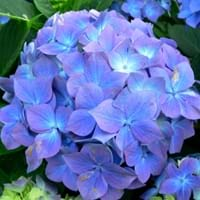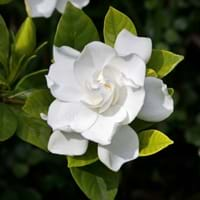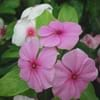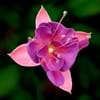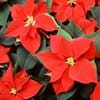Life Span
Perennial
Perennial
Origin
China, Indonesia, Japan, Korea, The Hiamalayas
China
Types
Bigleaf hydrangea, Hortensia, Smooth hydrangea, Oakleaf hydrangea, Annabelle
August Beauty , Kleim’s Hardy, Aimee Yashioka, Radicans, Mystery
Habitat
Forest margins, Hillside, Woods
Subtropical climates, Tropical regions
USDA Hardiness Zone
3-9
8-10
Sunset Zone
A3, 1a, 1b, 2a, 2b, 3a, 3b, 4, 5, 6, 7, 8, 9, 10, 11, 12, 13, 14, 15, 16, 17, 18, 19, 20, 21
H1, H2, 7, 8, 9, 12, 13, 14, 15, 16, 18, 19, 20, 21, 22, 23, 24
Habit
Oval or Rounded
Oval or Rounded
Flower Color
Blue, Dark Purple, Light Purple, Red, White
White
Flower Color Modifier
Not Available
Not Available
Fruit Color
Not Available
Not Available
Leaf Color in Spring
Green
Dark Green
Leaf Color in Summer
Green, Dark Green
Dark Green
Leaf Color in Fall
Dark Green, Yellow, Yellow green
Dark Green
Leaf Color in Winter
Not Available
Dark Green
Leaf Shape
Oblovate
Ovate
Plant Season
Early Spring, Late Autumn
Mid Spring, Mid Summer
Sunlight
Full Sun
Bright Indirect Sunlight
Type of Soil
Light
Well drained
The pH of Soil
Acidic
Acidic
Soil Drainage
Well drained
Well drained
Bloom Time
Spring, Summer
Late Spring
Tolerances
Not Available
Not Available
Where to Plant?
Ground, Pot
Container, Ground, Pot
How to Plant?
Seedlings, Stem Planting
Stem Planting, Transplanting
Plant Maintenance
Medium
Medium
Watering Requirements
Keep the ground moist but not water-logged, Requires regular watering, Use and maintain water-efficient soaker hoses, Water twice a day in the initial period
Keep the ground moist but not water-logged, Requires regular watering, Requires watering in the growing season, Water twice a day in the initial period
In Summer
Lots of watering
Lots of watering
In Spring
Moderate
Moderate
In Winter
Average Water
Average Water
Soil Type
Light
Well drained
Soil Drainage Capacity
Well drained
Well drained
Sun Exposure
Full Sun
Bright Indirect Sunlight
Pruning
Cut or pinch the stems, Do not prune during shooting season, Prune lower leaves, Prune to stimulate growth, Remove dead or diseased plant parts
Cut or pinch the stems, Do not prune during shooting season, Prune in summer, Prune prior to new growth, Remove dead or diseased plant parts, Remove deadheads
Fertilizers
All-Purpose Liquid Fertilizer
All-Purpose Liquid Fertilizer
Pests and Diseases
Anthracnose, Cercospora leaf spot, Mushroom root rot, Powdery mildew
Bud drop, Powdery mildew, Root rot, Stem canker
Plant Tolerance
Drought
Drought
Flower Petal Number
Single
Double
Foliage Texture
Coarse
Medium
Foliage Sheen
Matte
Glossy
Attracts
Bees, Flies
Bees
Allergy
Chest tightness, Diarrhea, Dizziness, Nausea, Vomiting
Asthma, Headache
Aesthetic Uses
Showy Purposes
Showy Purposes
Beauty Benefits
Not Available
Not Available
Environmental Uses
Air purification
Air purification
Medicinal Uses
Fever, Kidney problems, Urinary tract problems
Cold, Negativity
Part of Plant Used
Flowers, Root
Flowers, Fruits, Leaves
Other Uses
Not Available
Can be made into a herbal tea, Oil is used for aromatherapy, Oil is used in perfume, soaps, creams, etc., Showy Purposes, Used as Ornamental plant, Used for fragrance
Used As Indoor Plant
No
Yes
Used As Outdoor Plant
Yes
Yes
Garden Design
Not Available
Not Available
Botanical Name
Hydrangea
Gardenia
Common Name
Hydrangea or hortensia
Gardenia
In Hindi
Hydrangea
Gardenia
In German
Hortensie
Gardenie
In French
Hortensia
Gardénia
In Spanish
Hortensia
Gardenia
In Greek
υδραγεία
γαρδένια
In Portuguese
Hortênsia
gardênia
In Polish
Hortensja
Gardenia
In Latin
Hibiscus
Gardenia
Phylum
Magnoliophyta
Tracheophyta
Class
Magnoliopsida
Magnoliopsida
Order
Cornales
Gentianales
Family
Hydrangeaceae
Rubiaceae
Clade
Not Available
Angiosperms, Asterids, Eudicots
Tribe
Not Available
Gardenieae
Subfamily
Not Available
Ixoroideae
Properties of Hydrangea and Gardenia
Wondering what are the properties of Hydrangea and Gardenia? We provide you with everything About Hydrangea and Gardenia. Hydrangea doesn't have thorns and Gardenia doesn't have thorns. Also Hydrangea does not have fragrant flowers. Hydrangea has allergic reactions like Chest tightness, Diarrhea, Dizziness, Nausea and Vomiting and Gardenia has allergic reactions like Chest tightness, Diarrhea, Dizziness, Nausea and Vomiting. Compare all the properties and characteristics of these two plants. Find out which of these plant can be used as indoor plant. If you are interested to decorate your house and garden, find out aesthetic uses, compare them and select the plant which will beautify your surrounding. Along with beautification, try comparing medicinal and edible uses of Hydrangea and Gardenia and you can choose the plant having best and most benefits.
Season and Care of Hydrangea and Gardenia
Season and care of Hydrangea and Gardenia is important to know. While considering everything about Hydrangea and Gardenia Care, growing season is an essential factor. Hydrangea season is Early Spring and Late Autumn and Gardenia season is Early Spring and Late Autumn. The type of soil for Hydrangea is Light and for Gardenia is Well drained while the PH of soil for Hydrangea is Acidic and for Gardenia is Acidic.
Hydrangea and Gardenia Physical Information
Hydrangea and Gardenia physical information is very important for comparison. Hydrangea height is 4.92 cm and width 11.00 cm whereas Gardenia height is 26.25 cm and width 5.24 cm. The color specification of Hydrangea and Gardenia are as follows:
Hydrangea flower color: Blue, Dark Purple, Light Purple, Red and White
Hydrangea leaf color: Green
Gardenia flower color: White
- Gardenia leaf color: Dark Green
Care of Hydrangea and Gardenia
Care of Hydrangea and Gardenia include pruning, fertilizers, watering etc. Hydrangea pruning is done Cut or pinch the stems, Do not prune during shooting season, Prune lower leaves, Prune to stimulate growth and Remove dead or diseased plant parts and Gardenia pruning is done Cut or pinch the stems, Do not prune during shooting season, Prune in summer, Prune prior to new growth, Remove dead or diseased plant parts and Remove deadheads. In summer Hydrangea needs Lots of watering and in winter, it needs Average Water. Whereas, in summer Gardenia needs Lots of watering and in winter, it needs Average Water.
